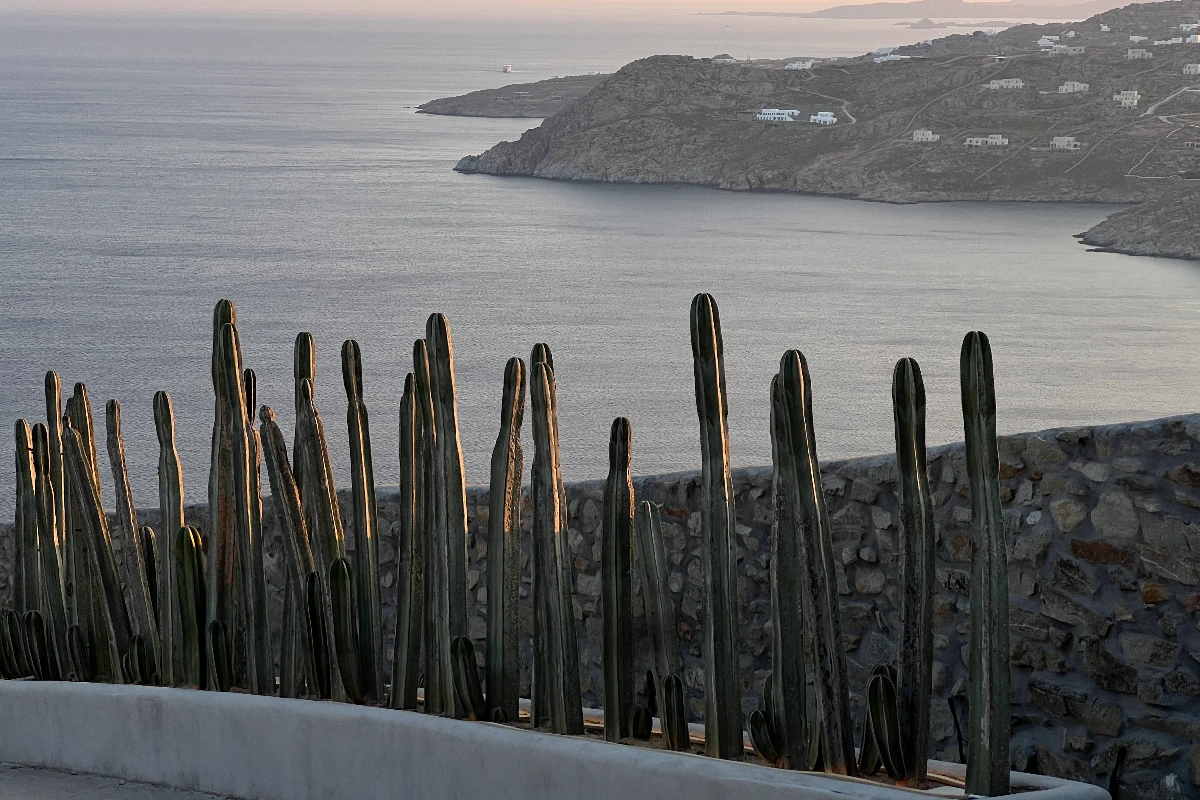
Rooted in Mykonos: a family’s commitment to vernacular architecture and regenerative hospitality
The story of the Myconian Collection does not begin with a business plan or a brand identity—it begins with land, stone, and family. Redefining hospitality on an island too often reduced to hedonism and spectacle
From local roots to luxury hospitality: how the Myconian Collection began with land, family, and stone
When George Daktylides returned to Mykonos after his military service in the early 1960s, the island was still a barter economy. Food was exchanged for sugar and cigarettes, and tourism was a foreign concept. Mykonos was known only to archaeologists excavating nearby Delos and to a few curious Athenians. But George, newly married to Eleftheria from Delos, saw opportunity where others saw limitation. He started with a bus—just one—transporting workers to the barite mines. That fleet soon grew to twenty-five, run alongside his brothers. Cement, rebar, and gravel followed. Then, with his own second-hand Caterpillar loader, George built what would become Mykonos’ first private hotel outside Chora: the 25-room Kohili, opened in 1979.
What followed was a gradual unfolding. Korali came next, then Kyma and Kalypso. In 1986, the Myconian Ambassador became the first five-star private hotel on the island. And so, over time, a family business rooted in soil, labor, and relationships took architectural form. The buildings rose slowly and respectfully, each set into the land without dominating it, each designed with an intimate knowledge of wind, sun, slope, and stone. This ethos continues today through George and Eleftheria’s four sons—Panos, Markos, Vangelis, and Marios—who, after training in Lausanne, have guided the Myconian Collection to become one of the island’s most extensive hospitality portfolios. But despite international recognition, the Collection remains distinct in one aspect: it grows like a garden rather than a franchise—organically, seasonally, always in response to place.
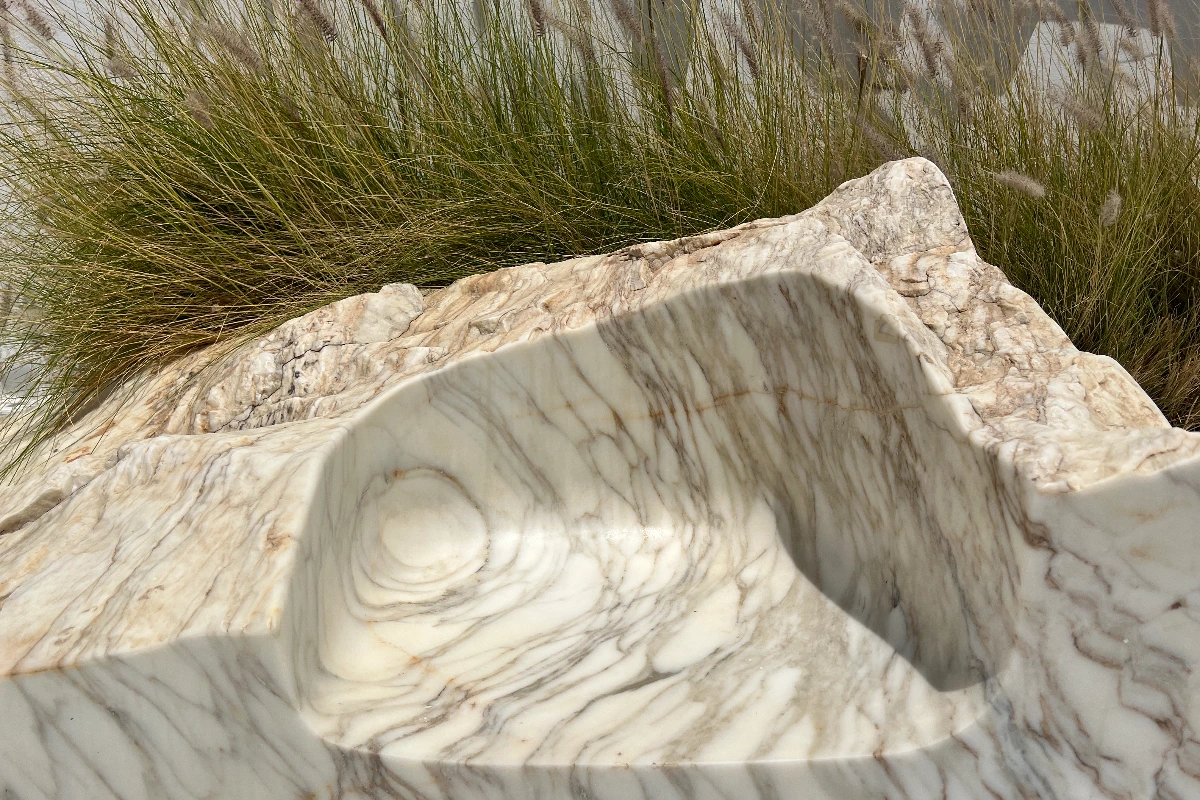
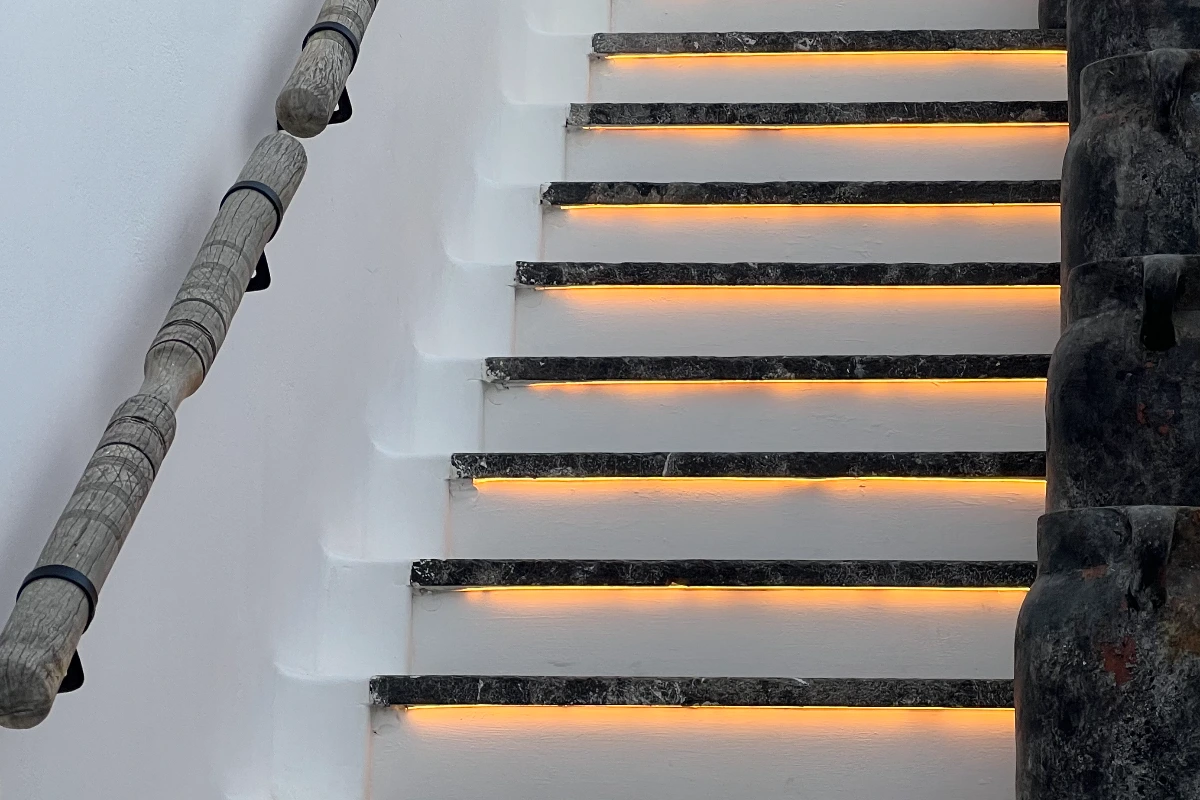
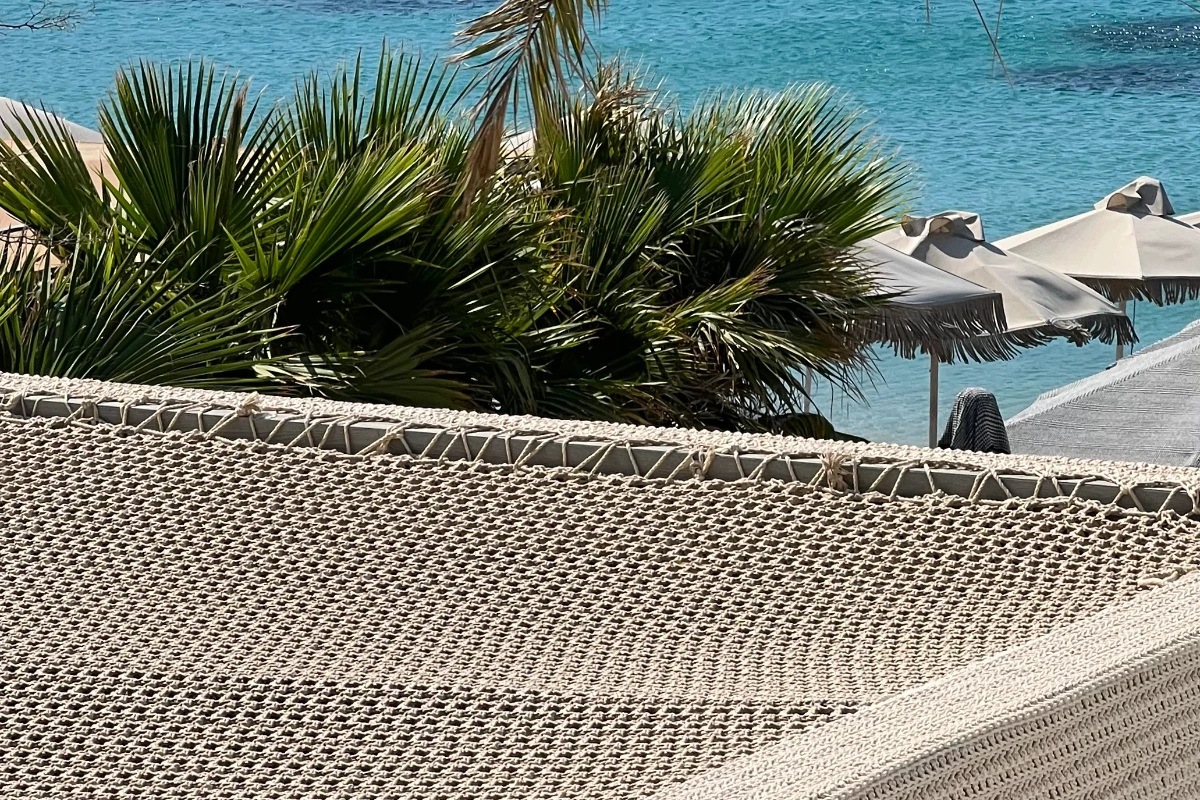
Cycladic architecture and environmental dialogue at Myconian O’: building with climate, terrain, and light in Ornos
The clearest expression of this design philosophy in recent years is Myconian O’, opened in 2022 in the bay of Ornos. Set on one of the island’s most coveted shorelines, Myconian O’ was conceived as a dialogue with its immediate environment. The project, designed by Antonis Kalogridis, is centered around the physical qualities of the site—light exposure, prevailing winds, topographic gradation—and the material logic of Cycladic construction.
The 65 rooms and suites open onto private terraces or balconies, many with individual plunge pools. Indoor and outdoor zones flow seamlessly through large openings and transitional spaces—verandas, shaded lounges, and landscaped patios. The palette is restrained and site-specific: stone, wood, sand, pale grey, matte black, and white, with occasional accents of vegetation or sky. Textiles are made of loosely woven linen, inviting filtered light into the rooms while offering natural ventilation. All lighting fixtures are custom-designed in Greece, using materials such as bamboo, wicker, and pine.
The lobby does not impose itself as a “statement space.” Rather, it serves as a mediation device between architecture and natural elements, welcoming the sea breeze while softening the Aegean glare. Marble surfaces are juxtaposed with wooden built-ins and furniture crafted by Greek artisans. The landscaping is integral to the design: palm trees offer shade without artificial canopies, while a linear water feature guides the eye toward the sea.
A desalination system provides water for daily operations, and treated greywater is used for irrigating the surrounding vegetation. The restaurant and bar areas follow the group’s culinary principles, emphasizing seasonal produce and sustainable fishing. Ingredients are locally sourced from farmers and fishermen the family has worked with since the first hotel.
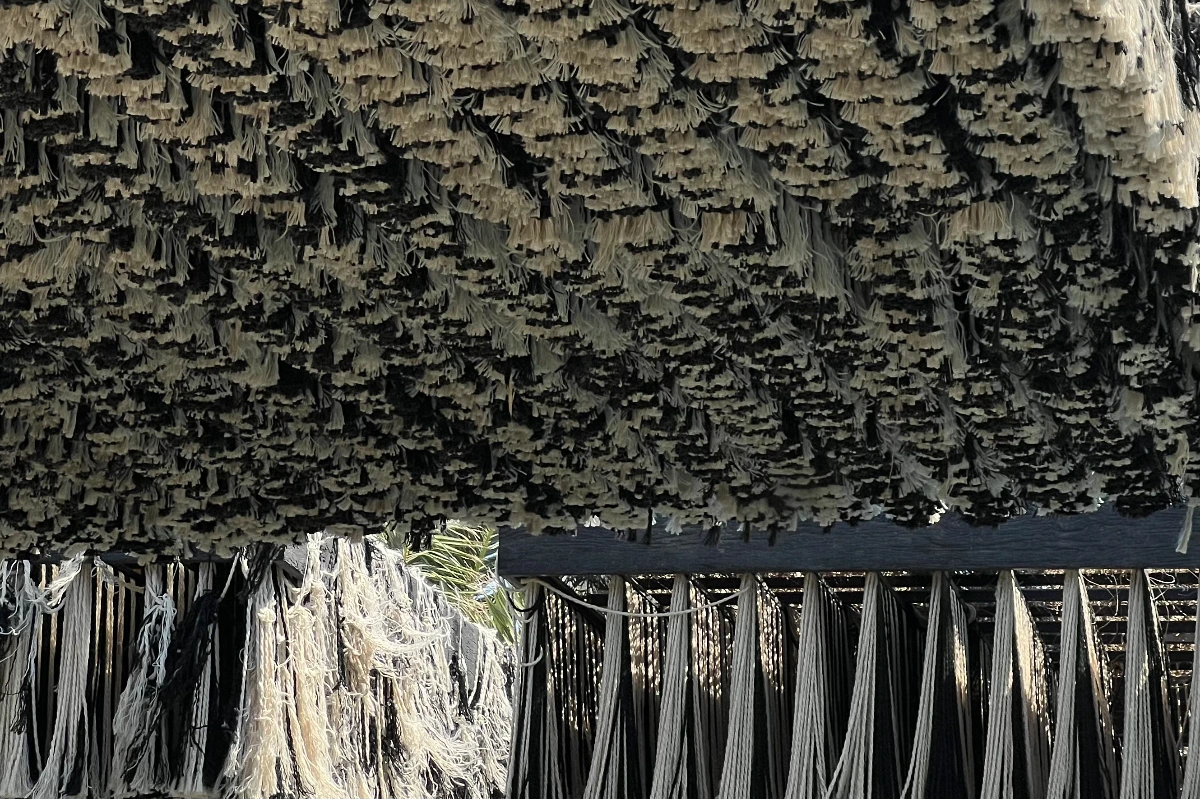
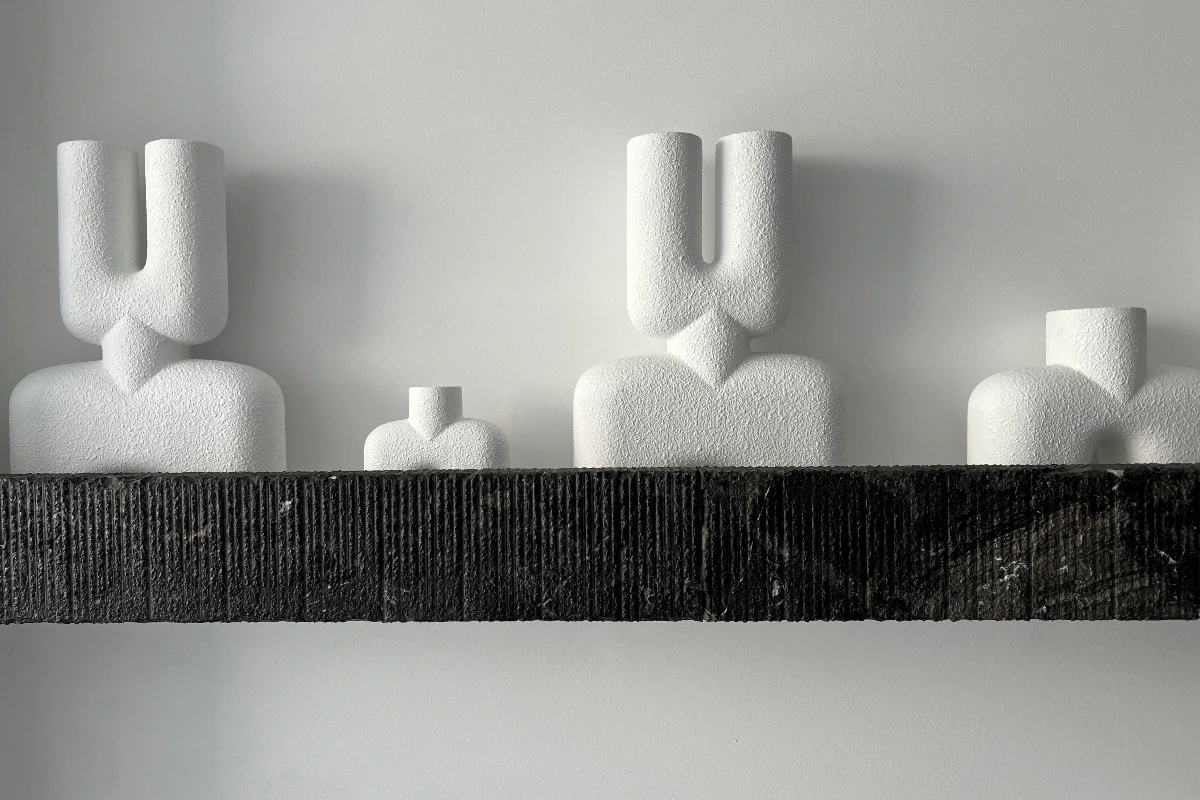
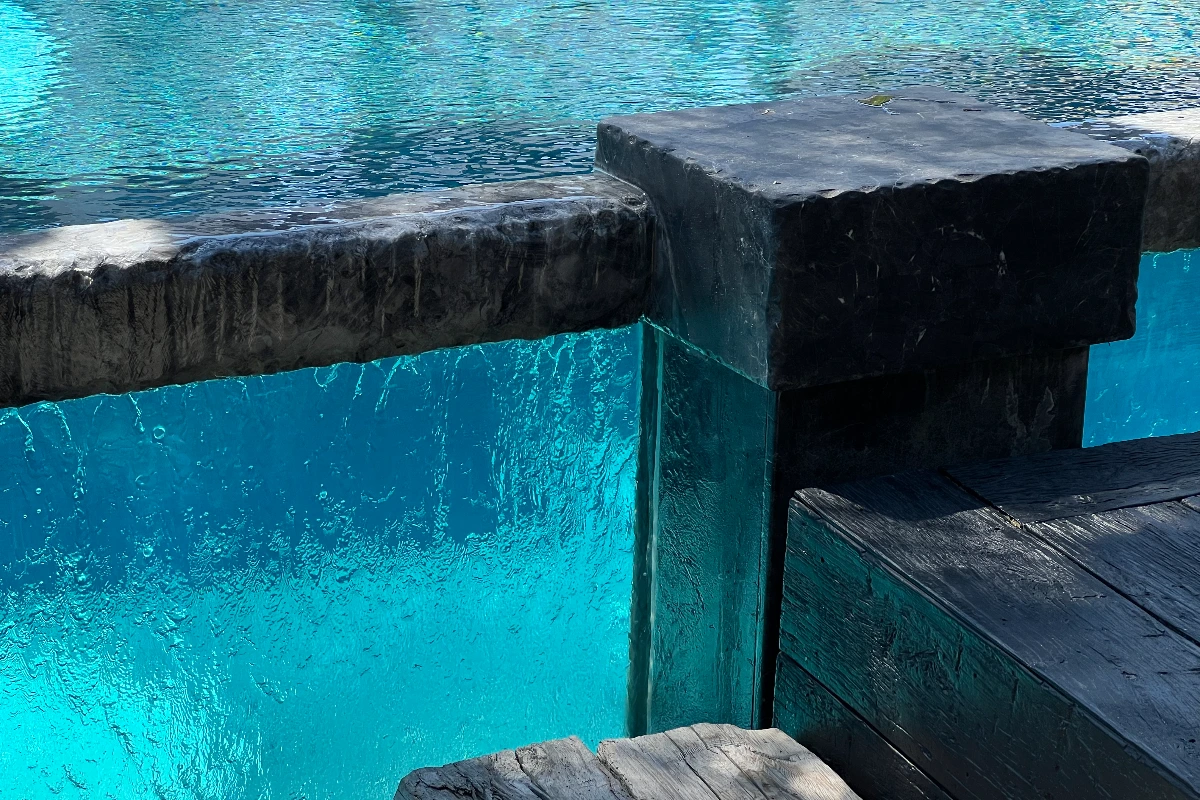
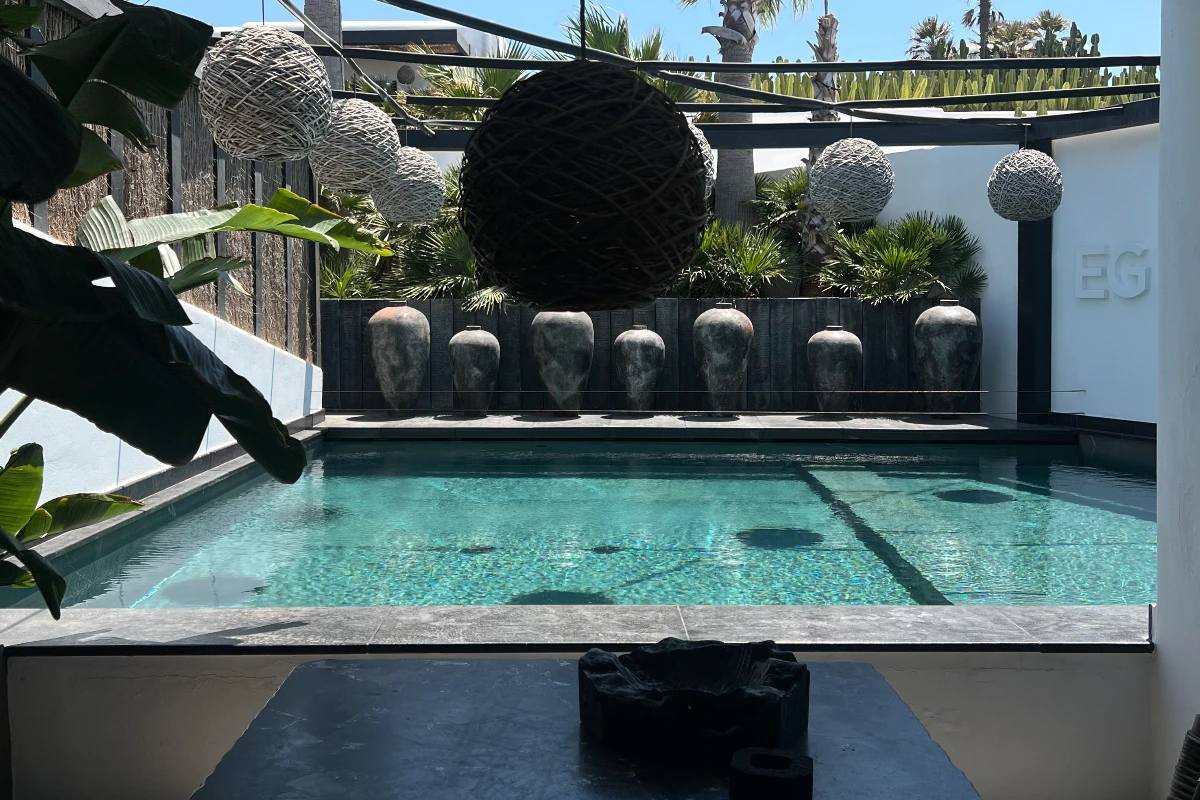
Panoptis Escape on Mykonos’ southern heights: elemental architecture, panoramic design, and meditative hospitality
From the elemental mood of O by Myconian on the shore of Ornos, the Myconian narrative ascends—both topographically and conceptually—toward one of the most elevated sites of the island: Panoptis Escape, perched high above Elia Beach on Mykonos’ south coast. The name itself is telling. Panoptis, derived from ancient Greek, evokes not surveillance, but sacred sight: the place “where man meets his gods.” Here, altitude becomes metaphor, and architecture becomes mediation.
Panoptis Escape offers quietness without detachment, and seclusion without aesthetic rupture. From sunrise over the eastern cliffs to the final light over Delos, it invites an experience of space and time that is rare. In this suspended geography, hospitality becomes both intimate and panoramic, rooted and elevated—an open-ended vantage point from which to contemplate the island, its gods, and oneself.
Completed in 2022, the property is a member of Small Luxury Hotels of the World. 18 independent suites and a central estate are designed as a secluded micro-village. The site is accessed by a private road and occupies over 16,000 square meters of hillside facing east across the archipelago of the Cyclades: Panoptis Escape is the highest hotel in Mykonos.
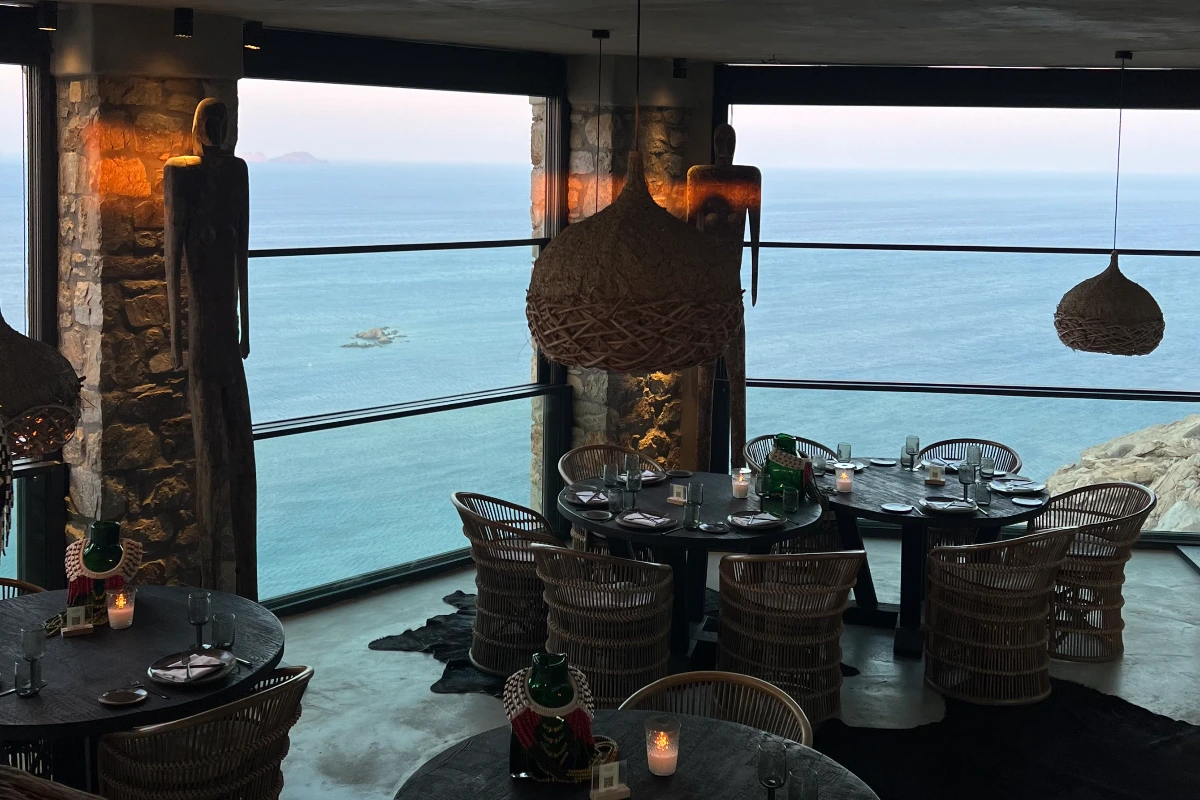
The architecture is minimal in mass but complex in rhythm: low volumes in Cycladic white, stone and raw wood, embedded into the slope and articulated around terraces, water features, and uninterrupted views. Interior spaces are defined by natural textures and bespoke furnishings, including artisanal pieces and artworks. Each unit includes a private terrace with pool or whirlpool, smart home systems, and open-plan bathrooms finished in premium local materials. The design draws not from trends, but from the landscape’s own palette: sky, sand, granite, and sun.
At the heart of the complex lies Panoptis Escape Villa, a self-contained enclave of 21 bedrooms, 12 private pools, internal spa facilities, a professional kitchen, outdoor BBQ zone, heliport, and enough sleeping space for up to 69 guests (42 adults and 27 children). The Villa’s scale—1,900 square meters indoors, 2,500 outdoors—is unprecedented on the island, yet it is carefully concealed within the terrain, maintaining the Collection’s principle of architectural discretion.
Panoptis is not isolated from the broader ecosystem of the Collection: guests have full access to all Myconian properties across the island, including restaurants, spas, bars, and venues for private events. A concierge system ensures seamless transportation, with services that include chauffeur-driven transfers, yacht rentals, and helicopter landings on-site.
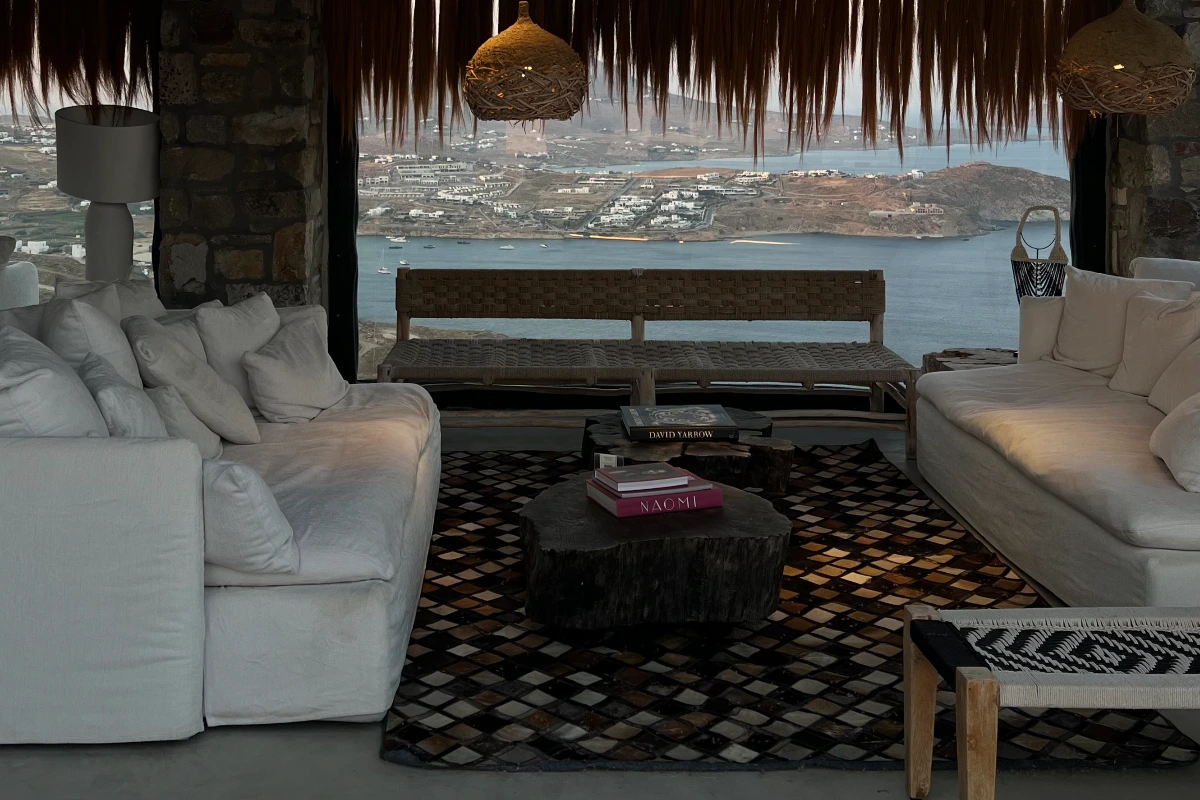

Deos above Mykonos Town: a hotel shaped by myth, material precision, and sensory transitions
Descending again, we return to Mykonos Town, but not to its dense lanes. Just above the harbor, Deos occupies a rare vantage: one side faces the horizon, where the sun disappears each evening behind the sea; the other looks down on the town’s windmills, the Aegean white of Chora softening into the dusk. This dual orientation—toward myth and toward modernity—is central to the hotel’s identity.
The word deos (δέος) refers to awe, to a humbling encounter with the sublime. Architecturally, Deos translates this not through grandeur but through precision. GM Architects designed the property as a sequence of experiences rather than a set of rooms: guests arrive along a private stone-paved road, pass under a canopy of trees, and enter a central courtyard paved with mosaics inspired by ancient Delian patterns. Each space opens gradually into the next, from shaded corridors to sunlit terraces, from narrow passageways to broad panoramas. The interiors continue this theme of ritual: wood, marble, and limewashed surfaces give texture and weight. In the spa, carved directly into the natural rock, light is filtered through narrow slits, creating shadows that shift throughout the day.
At the center of Deos is Epico, the property’s signature restaurant led by Executive Chef Ilias Maslaris. The culinary offering emphasizes Mediterranean tradition through the lens of Greek gastronomic heritage, with a strong focus on seasonal ingredients and local sourcing. Fish and seafood are delivered fresh from Mykonian waters, while many of the herbs and vegetables used in the kitchen come from trusted producers in the Cyclades. The wine list includes a selection of labels from independent Greek wineries, some of which adopt sustainable and organic practices. The atmosphere is that of a refined fine dining restaurant, with discreet yet attentive service that reflects the overall ethos of Deos. Epico operates throughout the day, transitioning from informal lunches on the deck to curated multi-course dinners in the evening, all within a spatial context designed to maximize views of the Aegean and the Chora below.
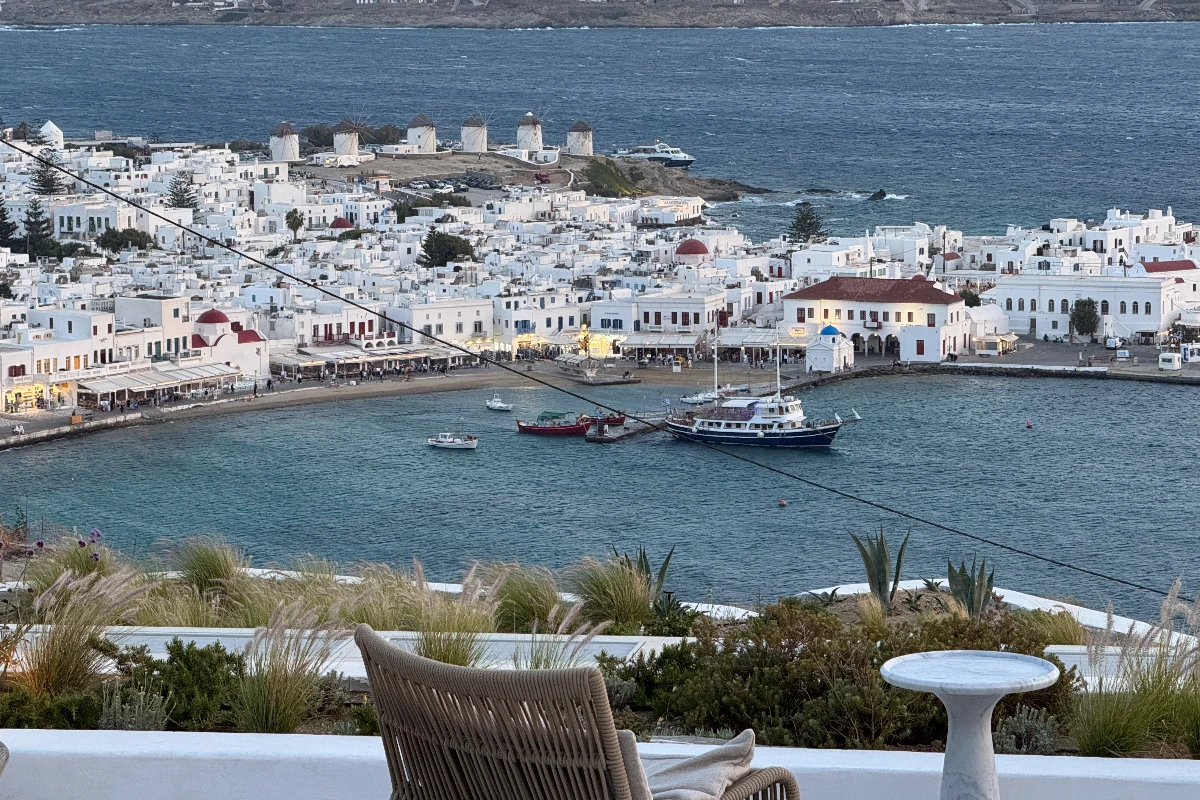
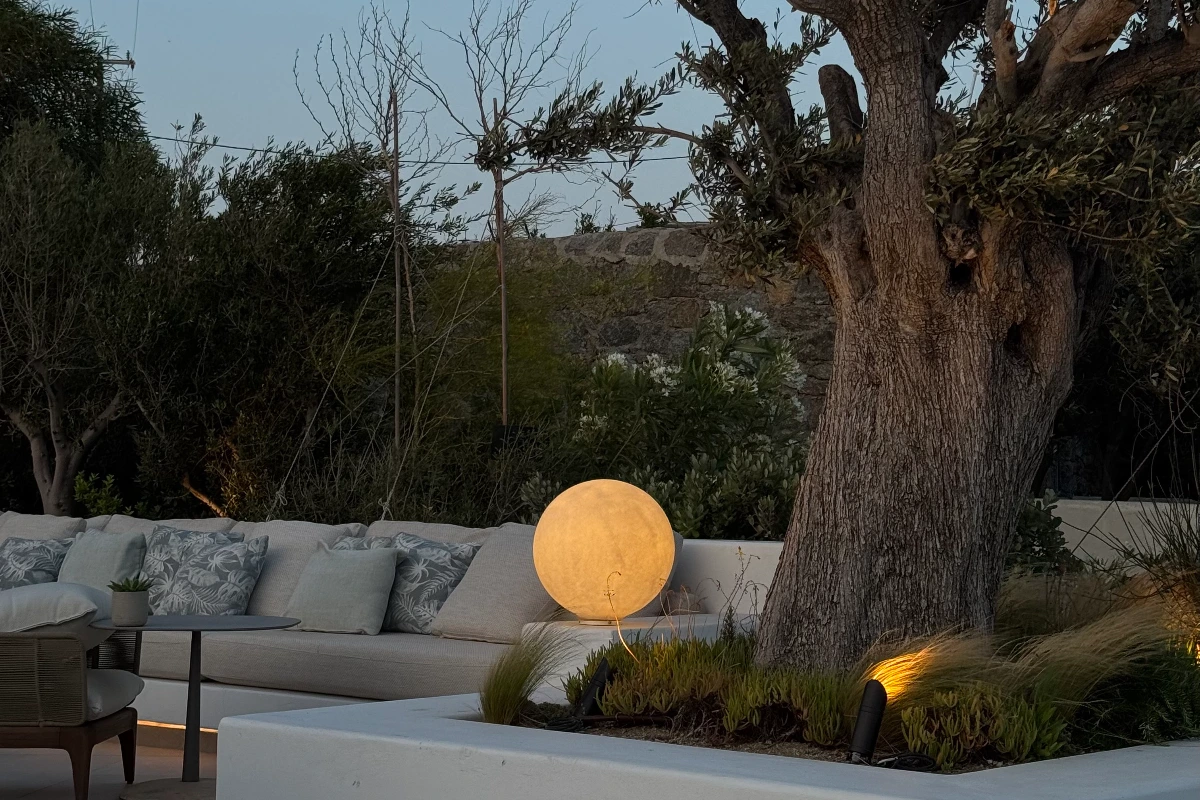
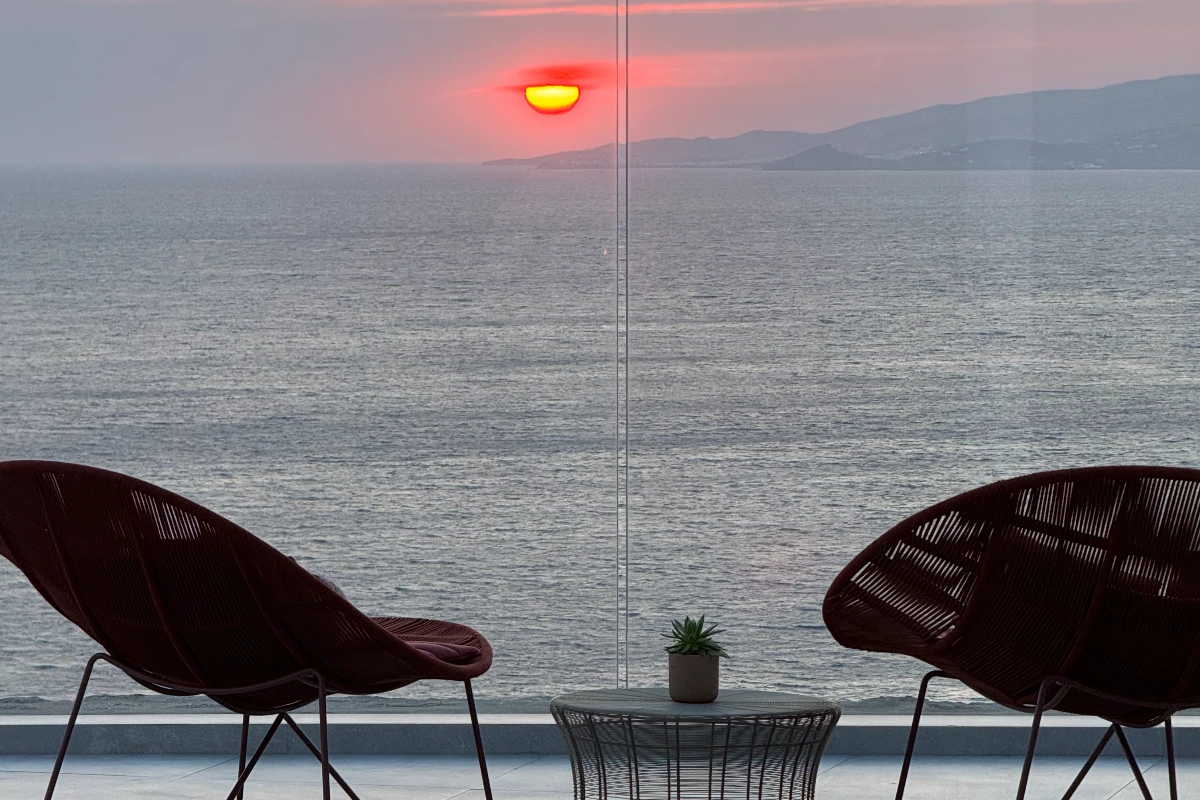
Myconian Ambassador at Platis Gialos: continuity of form, five-star service, and Cycladic vernacular preserved
The itinerary through the properties of the Myconian Collection continues at Platis Gialos, where the Ambassador marks a key moment in the family’s shift from pioneering hospitality to fully fledged architectural and managerial vision. In 1992, the Myconian Ambassador became the first five-star hotel on Mykonos. At the time, there were no comparable facilities on the island offering this level of service or integration with the global hospitality network. The hotel would later become a proud member of Relais & Châteaux, cementing its role as a benchmark of Greek island hospitality.
The Ambassador retains a strong connection to the landscape. Its architecture does not impose on the natural slope but rather follows it, allowing for panoramic views across Psarou, Paranga, and the open Aegean. The palette of materials—whitewashed exteriors, natural stone accents, Cycladic plasterwork—echoes the forms of Chora, while the interiors articulate a discreet sense of refinement through muted colors, clean-lined furnishings, and minimal ornamentation.
The culinary identity of the Ambassador is defined by Efisia, its award-winning fine dining restaurant, honored at the 2024 Greek Cuisine Restaurant Awards. Located in an intimate, vaulted space within the hotel, Efisia reinterprets local culinary traditions through precise technique and thoughtful ingredient sourcing. Executive Chef Ilias Maslaris, in collaboration with Kyriakos Kremetidis, leads a kitchen focused on regional heritage and contemporary presentation.
The menu reflects the Cycladic terroir: homemade ravioli filled with Myconian Tirovolia cheese and shrimp, Florina red pepper coulis with fresh truffle, a traditional fish soup inspired by monastic recipes from Mount Athos, and slow-cooked local lamb with smoked eggplant and yogurt. Vegetarian options and gluten-free dishes are integrated into the seasonal menus, and a curated wine list highlights Greek producers with a focus on Cycladic terroirs.
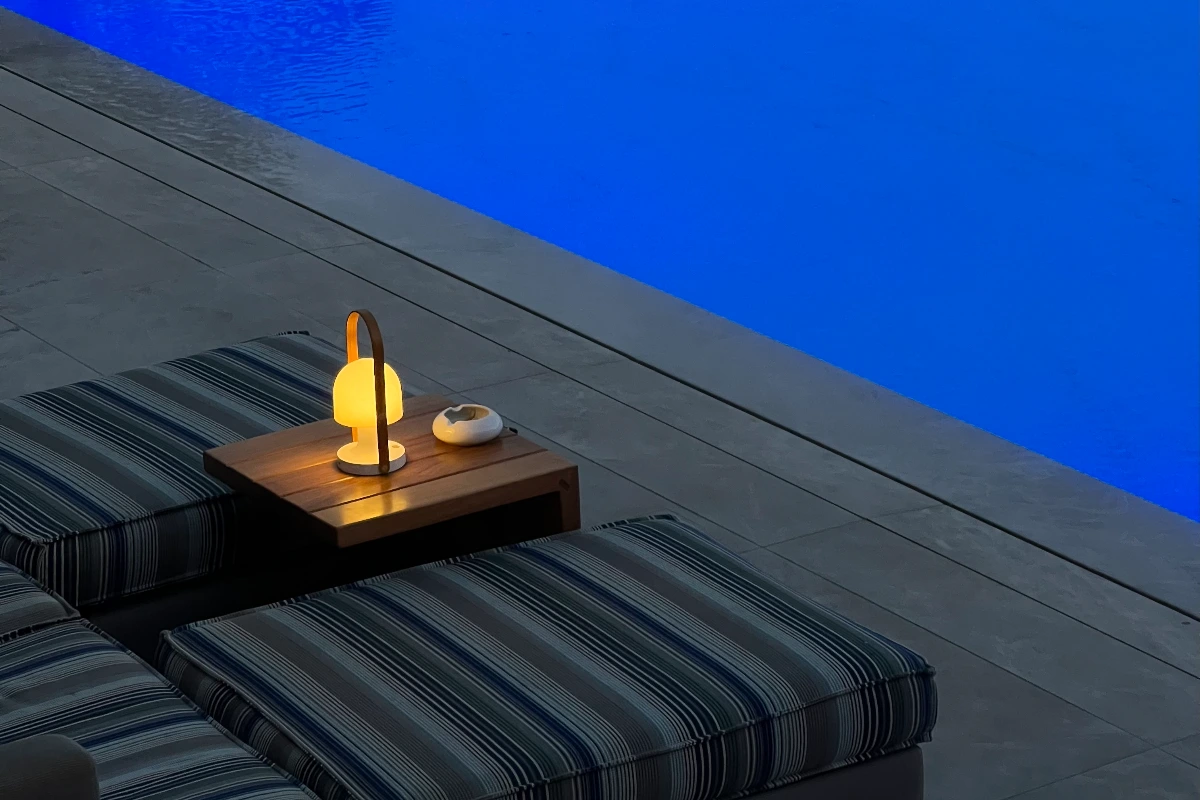
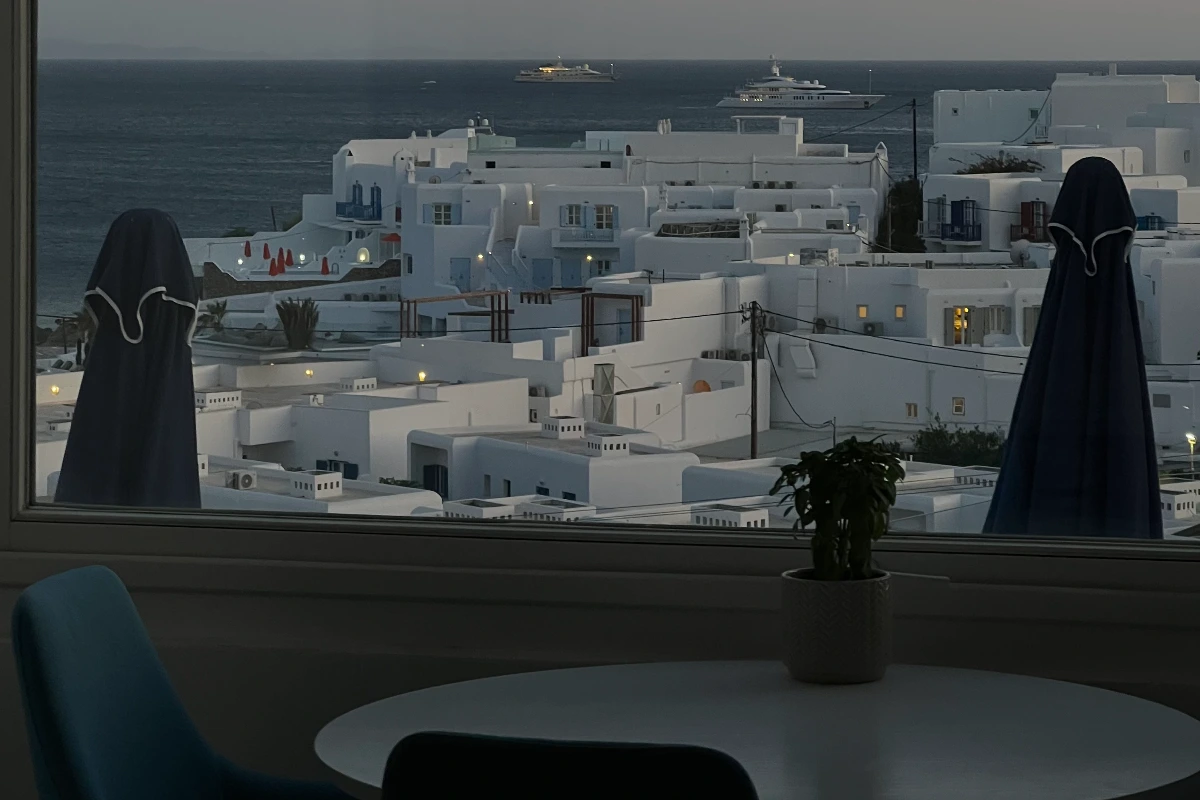
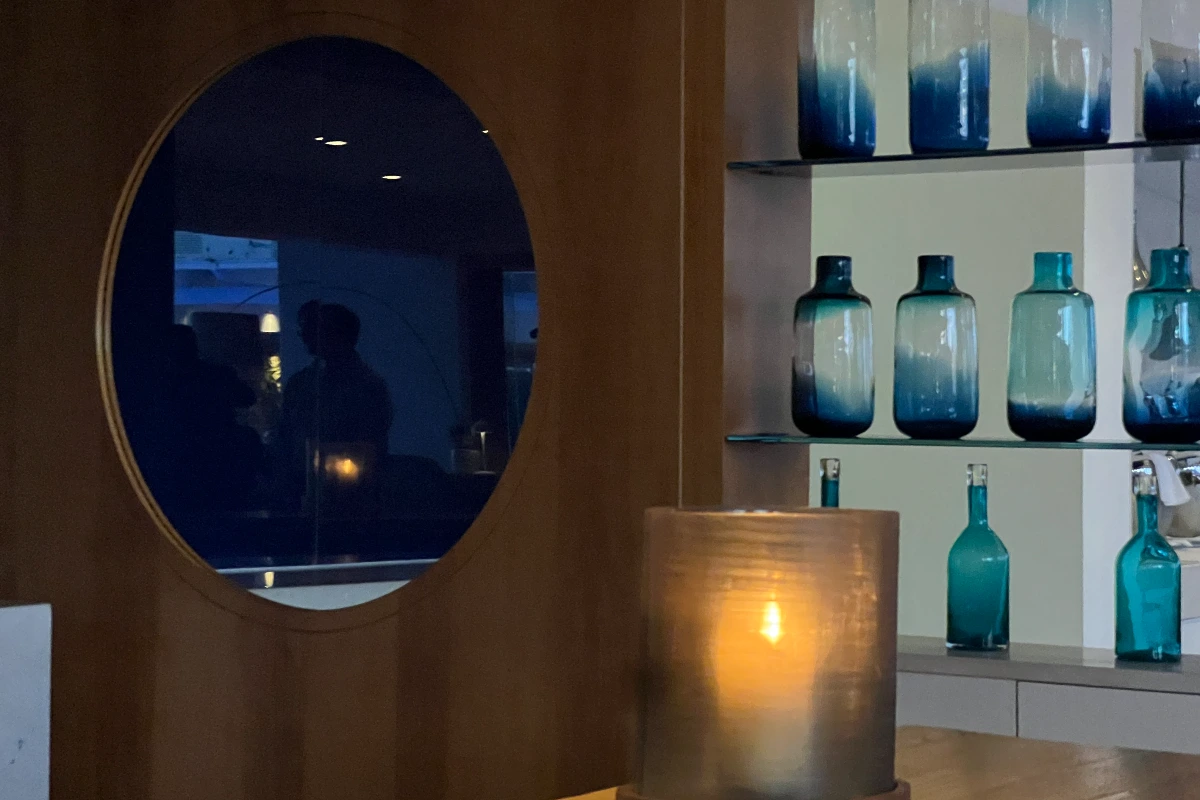
Sunrise Mykonos at Agrari Beach: architectural restraint, cohabitation with nature, and culinary knowledge as heritage
Situated on the southern shore of Mykonos, far from the visual clutter and sonic excess of the island’s more trafficked bays, the Sunrise Mykonos marks a deliberate return to an earlier relationship with the land—one defined by proximity, humility, and cohabitation with the environment rather than mastery over it. Positioned directly on Agrari Beach, a site long known to locals for its unbuilt horizon and absence of mass development, the hotel was envisioned not as a resort complex but as an extension of the island’s agricultural past.
The architecture, true to the Myconian Collection’s vernacular approach, is composed of a system of seven parallel volumes, each slightly elevated from the ground to preserve the natural dune morphology and to allow for air circulation and ecological continuity. The visual language is minimal and consistent with the Cycladic idiom: thick whitewashed walls, natural stone accents, timber pergolas, and planted rooftops. Marine-treated oak walkways connect the structures while avoiding any excavation or concrete slabs that might interfere with the terrain’s hydrology or flora.
From their terraces, the rooms open directly onto the sea, offering uninterrupted continuity with the shoreline. The interiors follow the same logic of restraint: local stone flooring, exposed wood beams, neutral textiles in natural fibers, and carefully designed lighting that minimizes artificial glare and preserves the nocturnal atmosphere of this quiet coast. The hotel’s low profile ensures it remains invisible from the waterline—a gesture of respect not often found in new developments on the island.
The culinary dimension at Sunrise is embodied by the Almiriki restaurant, a project that reflects the group’s commitment to Greek food heritage not as nostalgia, but as a system of knowledge and ecological intelligence. In line with the values of Relais & Châteaux, of which Sunrise became a member in 2025, Almiriki is structured around seasonal availability, minimal processing, and ancestral techniques.
Chef Ilias Maslaris—already at the helm of other kitchens within the Myconian Collection—has created a menu that reinterprets 4,000 years of Aegean culinary tradition: amphora-aged olive oil; fermented cereals and legumes; open-fire preparations in pitharia (large ceramic pots); fresh fish prepared with minimal intervention; and desserts based on grape must, carob, and thyme honey. The Greek culinary trinity—olive oil, whole grains, and wine—is present throughout, and rather than operating as a symbolic gesture, it forms the working core of the restaurant’s food philosophy.
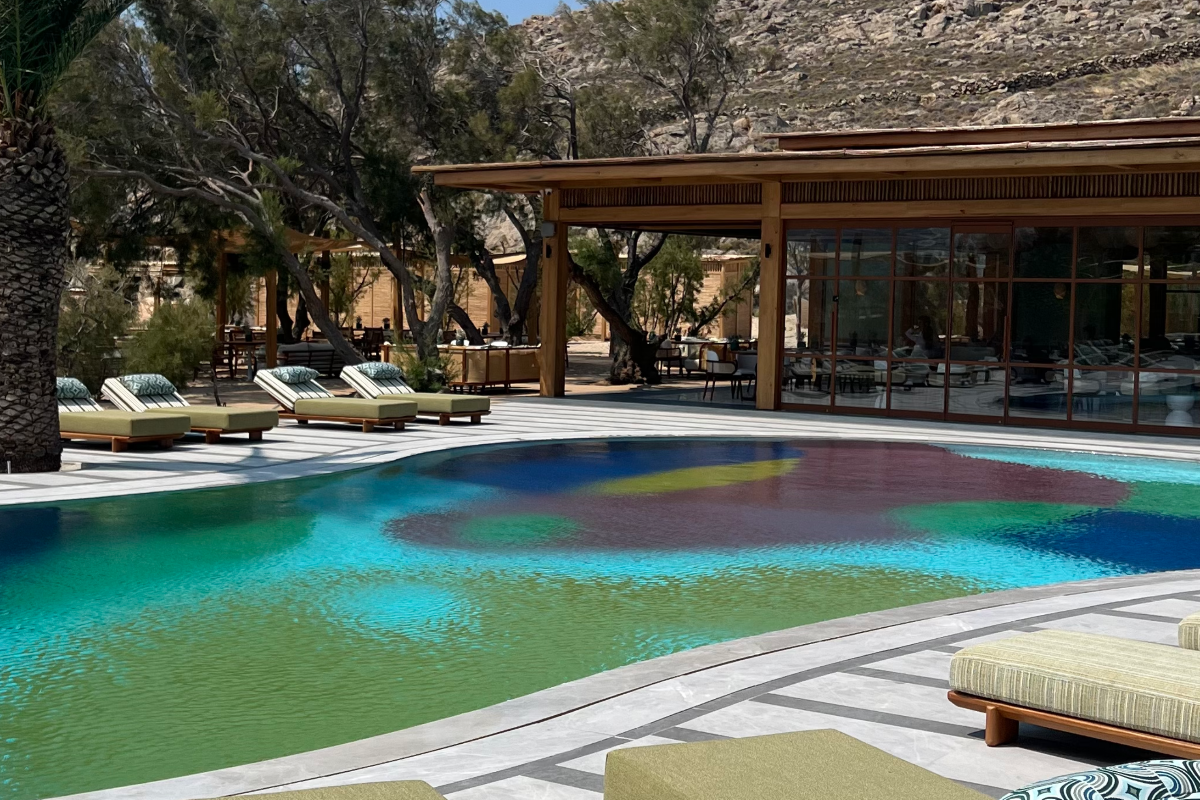
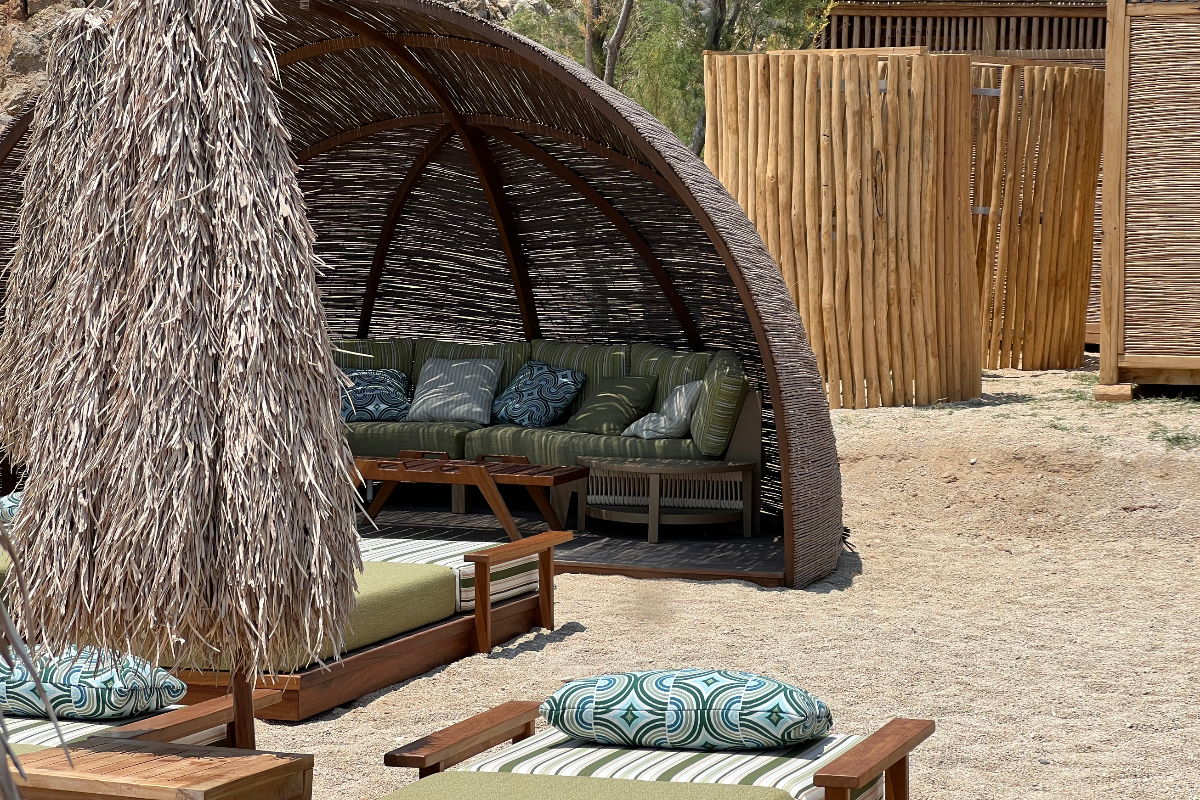
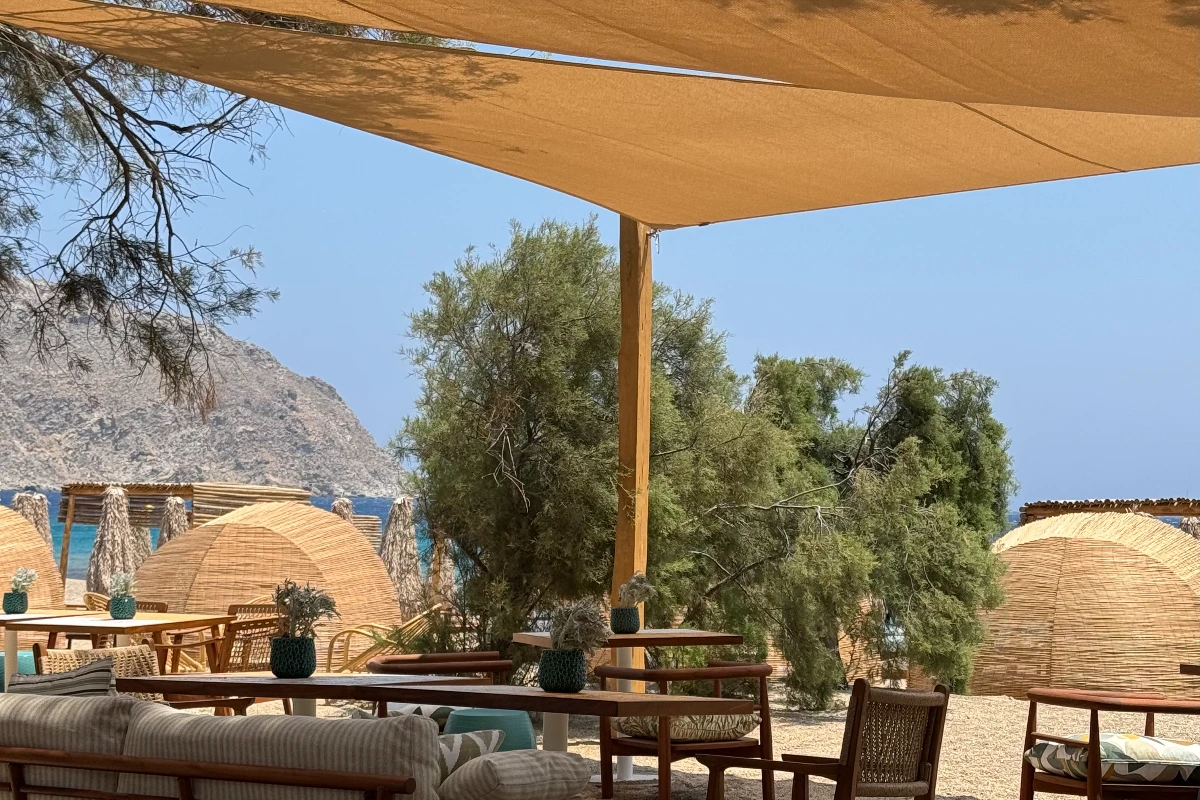
Regenerative systems and long-term thinking: how the Myconian Collection approaches sustainability as cultural continuity
The Myconian Collection’s approach to sustainability is a continuation of practices that began out of necessity and gradually became the foundation for an environmental and social strategy deeply embedded in the business. When George Daktylides was hauling gravel and cement in the 1970s, resource efficiency wasn’t called sustainability—it was simply how you survived. The same economy of means that defined his first construction sites now defines the group’s low-impact operations across fourteen hotels.
Today, the Myconian Collection runs one of the most comprehensive environmental management systems in the Greek hospitality industry. It operates three fully functioning desalination plants with a total capacity of 1,600 cubic meters per day, producing potable water for guest use and technical water for pools, laundry, kitchens, and gardens. Greywater is collected, treated, and reused for irrigation across landscaped areas that total over 32,000 square meters. The entire network of hotels is equipped with dual water systems to prevent unnecessary cross-contamination and waste.
Energy management is handled with similar foresight. High-efficiency heat pumps have replaced older HVAC systems, achieving seasonal performance factors above 4.0. Roof-mounted photovoltaic arrays—kept out of sightlines to avoid altering the island’s visual profile—generate renewable energy for common areas and infrastructure needs. Motion sensors and smart lighting systems reduce consumption during low-occupancy periods. While off-grid operation isn’t feasible for resorts of this scale, the goal is to reduce peak demand and dependency on fossil-fuel-generated power.
Waste is separated into five distinct streams: organic, paper, plastic, glass, and general. The average recycling rate across the Collection in 2024 was over 63%, above the island average. Cooking oils are collected and sent to Paros for biodiesel production in collaboration with a local energy cooperative. Retired linens and towels are not discarded but donated to elderly homes, prisons, and monasteries across the Cyclades, extending their lifecycle and reducing landfill load.

Sustainability beyond infrastructure: education, biodiversity, and long-term community engagement across the Myconian Collection
In 2020, the Myconian Collection completed and donated a state-of-the-art secondary school to the island’s second-largest settlement, Ano Mera. The project included the full construction of a Gymnasio—Greece’s first stage of secondary education—serving students aged 12 to 15. The school consists of 13 bright, fully accessible classrooms, IT and science labs, outdoor sports courts, and a multipurpose events space. Significantly, the school also includes 18 residences for teaching staff—an essential feature on an island where seasonal rental pressure often displaces year-round professionals.
The building uses passive design strategies, integrates low-energy systems, and is equipped with smart classroom technologies. It is not simply an educational building, but a civic gesture that reflects a broader understanding of hospitality—not as the management of guest experiences alone, but as an ongoing relationship with the land and the people who sustain it.
This same principle is visible in smaller gestures. Beach cleaning programs, operated in collaboration with local NGOs, ensure the preservation of public and semi-public coastal areas. The group has supported the mapping and protection of local Posidonia oceanica meadows, vital for marine biodiversity and carbon capture. The kitchens across all properties adhere to a strict local sourcing policy: fish are caught in nearby waters using traditional nets; herbs are cultivated without pesticides on the family’s plots; and meats come from pastoral communities in Tinos, Syros, and Paros with whom the Daktylides family has collaborated for decades.
The culinary philosophy of the group is not a brand signature—it’s a logistical fact: the island’s carrying capacity is limited, and working with small-scale, proximate suppliers reduces emissions and ensures freshness.
Staffing practices, too, reflect a sustainable philosophy. Many employees have been with the Myconian Collection for over a decade, a rarity in a sector characterized by high turnover. The group supports staff with housing, local school access for children, and rotational scheduling that allows employees to stay close to family. This internal sustainability—human, not only environmental—is one reason why service at Myconian properties is consistently described as “personal without being intrusive.” It comes from continuity, not training manuals.
Matteo Mammoli
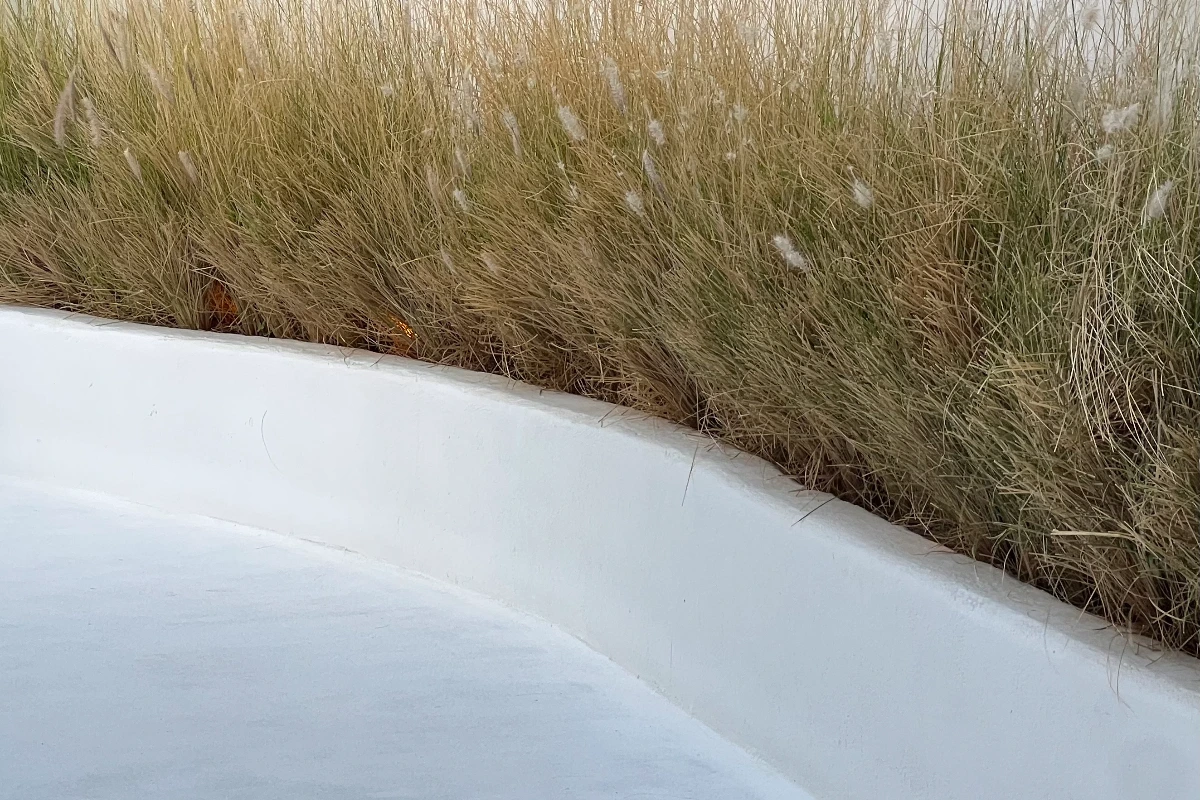
Myconian O’







